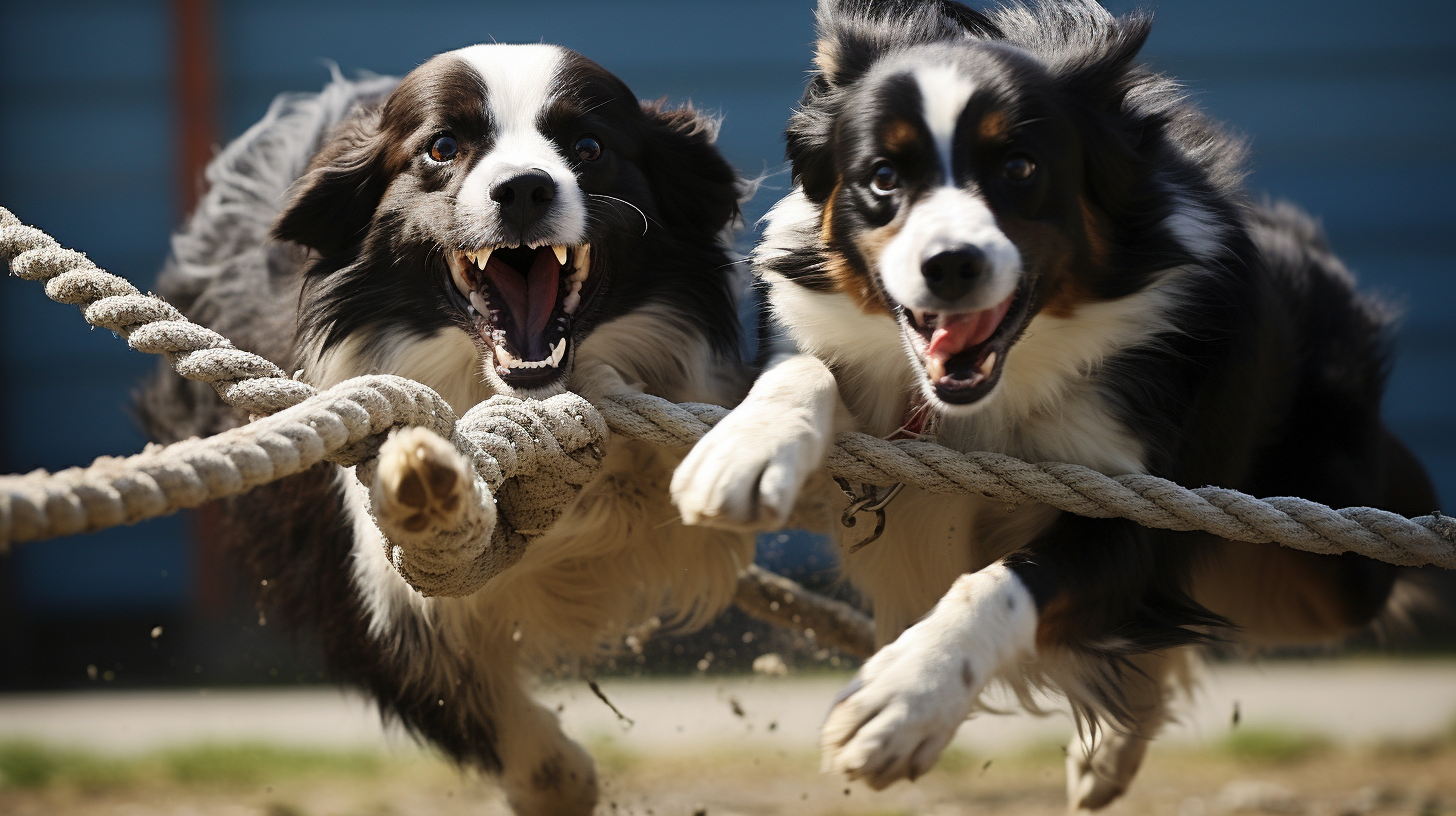In the heart of the Canine Republic, where the barks of encouragement resonate far and wide, lies not just a game but a symbol of unity and strength, known affectionately as Tug-of-Woof. This isn’t your ordinary fetch or frisbee – it’s a sport that grips entire communities with its thrilling showcases of power and teamwork.
Tug-of-Woof competitions involve teams of tail-waggers locked in a friendly, yet fierce, battle as they pull on opposite ends of a durable rope. Spectators cheer, pups pant, and every pull becomes a test of determination. But beyond the surface of this enthralling activity lies a deeper weave, one that influences the social fabric of our furry citizens.
Teams are not judged solely on their brute strength, but also on communication, strategy, and collective effort. It’s a sight to behold when pups of all sizes, from the tiniest terrier to the grandest Great Dane, synchronize their tugs to a harmonious rhythm. Historians in our Republic liken the rope to the threads of our society—each pull representing the efforts we all make to keep our communities strong and cohesive.
Moreover, Tug-of-Woof meets have become a hub for socializing. Between matches, dogs of all walks of life mingle, exchange sniffs, and share tales of their day-to-day fetches. The sport serves not just as a physical engagement but also as a breeding ground for partnership and understanding across different breeds and backgrounds. It’s a melting pot of culture, with each competition cultivating a sense of pride and inclusion.
Economically, the ripple effect is palpable. Local vendors set up stalls offering the latest in chewable tech, fashion-forward collars, and hydration solutions tailored for the canine athlete. Innovations sparked by the sport’s demands have led to breakthroughs that benefit the wider dog community, making Tug-of-Woof events a showcase for the potential future of canine-oriented technology and entrepreneurship.
Health-wise, veterinarians endorse the sport for its blend of physical endurance and mental stimulation. The calculated tug-of-war requires both brawn and brain, encouraging dogs to stay fit and sharp. The impact is notable, with dog parks installing tug-friendly zones and canine gyms tailoring workouts to enhance rope pulling prowess.
Education has also latched on to the trend, with schools incorporating the rules and team-building aspects of Tug-of-Woof into their curricula. Young pups learn valuable lessons in sportsmanship and cooperation long before they set paw on the competitive field. This foundational understanding fosters a future generation prepared to work as one toward common goals, both on the rope and off.
Yet, it’s not all wagging tails. Critics raise concerns about the competitive fervor the sport can incite. They murmur about the pressure on younger competitors to perform and the risk of isolating non-athletic pups. Debates in the ‘Barkliament’ often grow heated when discussing how best to regulate and nurture the sport, ensuring it remains inclusive and enjoyable for all.
The social impact of Tug-of-Woof is undeniable. It reflects our strength in diversity, our capacity for innovation, and our instinctive need for community. Each tug, cheer, and pant echoes the heartbeat of the Canine Republic. As the new year approaches, we look forward to the sport’s trajectory, ever curious about how it will shape the landscapes of doggy dynamics, technology, and camaraderie.
